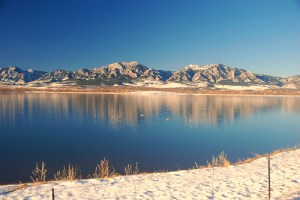
Some 1.8 billion people have internet access in the world today, but 1 billion people lack access to adequate amounts of freshwater. Harsh realities about water inspired Blog Action Day this year, an initiative led by Change.org, to rally bloggers to explore the global problem, to raise awareness and money to help solve it. The issues around water in 2010 concern scarcity, access, pollution and more.
But it’s not all grim. There are new opportunities for tech startups, engineers, investors and creative people to solve problems around the water crisis. Water and waste water technology is a hot market that could get hotter.
Eight companies in this subcategory of cleantech ranked on the 2010 Global Cleantech 100 list which we reported on earlier this week: Aqwise, Danfoss AquaZ, Emefcy, NanoH2O, Oasys Water, Ostara Nutrient Recovery Technologies, TaKaDu and WaterHealth.
A few others that were funded this year include: two water filtration companies Clean Filtration Technology and Quench; and an antimicrobial tech company, HaloSource which treats recreational and industrial water and aims to make drinking water safe.
We ran a story earlier today (that’s double Blog Action Day for TechCrunch) about i2O Water. The UK company was funded last year by First Capital and Swarraton Partners, and uses grid technology to save freshwater that would otherwise be lost through inefficient pipes, bursts and leaks in water systems.
We expect to see more startups and deals around water-related subcategories of cleantech, given the startling facts about global water supply and demand that are revealed in a comprehensive new Living Planet report by the WWF and Global Footprint.
Don’t blame us if you decide to drop out of school, quit your day job or ditch that other startup to work on something water-related after reading this list:
- Of the world’s total estimated 6.5 billion population some 28% has internet access today, while 15% of the population doesn’t have enough freshwater to live a healthy life.
- Seventy-one countries are experiencing stress on blue water resources, defined as sources of water that people withdraw, use and don’t return to the ecosystem. Nearly two-thirds (or 45) of these countries are experiencing moderate to severe stress.
- Countries experiencing blue water resource stress today are major producers of agricultural goods for national and global markets, including: India, China, Israel and Morocco. The strain on water resources will become more acute with increased human populations and economic growth, and be further exacerbated by the effects [of military conflict] and climate change. It will also make everything from energy to food more expensive.
- Since 1900, more than half of the world’s wetlands have disappeared.
- Overall, about one-third of the world’s 105 largest cities obtain a significant proportion of their drinking water directly from protected areas.
- The “water footprint” of a typical, U.S. cup of black coffee is massive — an estimated 591.74 cups (140 liters). This includes all the water used for growing, harvesting, refining, transporting and packaging the coffee beans, selling the coffee, and brewing the final cup. It’s that big if you drink it out of a reusable mug.
- A latte-to-go with sugar has a water footprint of 845.35 cups (200 liters). The water footprint increases when ingredients are added, and will vary according to whether sugar, for example, came from sugarcane or sugar beet. If the final product is a takeaway coffee in a disposable cup, the water footprint will include the volume of water used to produce the cup as well as the water used to produce, deliver and make the coffee.
- The United States has the third largest “production water footprint” in the world, after India which has the largest, then China. A production water footprint accounts for the volume of green water (a.k.a. rain) and blue water (withdrawn water ) that’s consumed in the production of agricultural goods from crops and livestock.
- The agriculture industry forecasts that “a doubling of agricultural output without associated increases in the amount of land or water used” is possible by 2050.
- The Living Planet Report tracks 714 species living in the world’s currently available freshwater, 636 species in marine water, and 1,341 terrestrial species. These marine and freshwater species declined 10% more than terrestrial from 1970-2007.
Image via: Let Ideas Compete